Wow! eBook: Android Application Programming with OpenCV - 6 new eBooks |  |
- Android Application Programming with OpenCV
- RestKit for iOS
- Building Minecraft Server Modifications
- Mastering Ninject for Dependency Injection
- Applying and Extending Oracle Spatial
- Developing SSRS Reports for Dynamics AX
| Android Application Programming with OpenCV Posted: 01 Mar 2014 07:34 AM PST
Book DescriptionTake a smartphone from your pocket, and within a few seconds, you can snap a photo, manipulate it, and share it with the world. You have just achieved mass production of image data. With a computer vision library such as OpenCV, you can analyze and transform copious amounts of image data in real time on a mobile device. The upshot to this is that you, as developers, can provide mobile users with many new kinds of images, constantly highlighting certain visual features that are of artistic or practical interest. Android is a convenient platform for such experiments because it uses a high-level language (Java), it provides standardized interfaces for sharing image data between applications, and it is mostly open source, so everyone can study its implementation. Android Application Programming with OpenCV is a practical, hands-on guide that covers the fundamental tasks of computer vision—capturing, filtering, and analyzing images-with step-by-step instructions for writing both an application and reusable library classes. Android Application Programming with OpenCV looks at OpenCV’s Java bindings for Android and dispels mysteries such as which version of these bindings to use, how to integrate with standard Android functionality for layout, event handling, and data sharing, and how to integrate with OpenGL for rendering. By following the clear, concise, and modular examples provided in this book, you will develop an application that previews, captures, and shares photos with special effects based on color manipulation, edge detection, image tracking, and 3D rendering.Beneath the application layer, you will develop a small but extensible library that you can reuse in your future projects. This library will include filters for selectively modifying an image based on edge detection, 2D and 3D image trackers, and adapters to convert the Android system’s camera specifications into OpenCV and OpenGL projection matrices. If you want a quick start in computer vision for Android, then this is the book for you. By the end of Android Application Programming with OpenCV, you will have developed a computer vision application that integrates OpenCV, Android SDK, and OpenGL. What you will learn from this book
Approach Who this book is for Book Details
Related Books
The post Android Application Programming with OpenCV appeared first on Wow! eBook. |
| Posted: 01 Mar 2014 07:31 AM PST
Book DescriptionRestKit is an iOS framework for streamlining communication with web services, and it relies on the AFNetworking library that is used by thousands of app developers. It has an interface that is elegant and well designed, and it provides a powerful object-mapping engine that integrates well with the CoreData database. RestKit for iOS Standard Guide will teach you everything from loading a simple list of objects to creating a fully-featured app. RestKit for iOS Standard Guide delivers constructive tools and insights into app development that will benefit any app developer. The book starts with a simple example and then moves on to more complex ones as your knowledge increases. By the end of the guide, you will be able to build a fully-featured app that uses RESTful web services and performs CRUD object manipulation. RestKit for iOS Standard Guide will provide you with all the information you need to boost the development process of both simple and complex apps. Once you have executed a simple example and reviewed the basic theory, you will move on to more advanced concepts with descriptions of real-life scenarios and how to overcome bottlenecks. RestKit for iOS Standard Guide is full of real-life examples that show you how to simplify data loading, basic and advanced object mapping, metadata mapping, and routing. This book also teaches you about routing, RESTful object manipulation and synchronization, integration with the user interface, and caching. What you will learn from this book
Approach Who this book is written for Book Details
Related Books
The post RestKit for iOS appeared first on Wow! eBook. |
| Building Minecraft Server Modifications Posted: 01 Mar 2014 07:27 AM PST
Book DescriptionIf you have ever played Minecraft on a public server then the chances are that the server was powered by Bukkit. Bukkit plugins allow a server to be modified in more ways than you can imagine. Learning to program your own server mods will allow you to customize the game to your own liking. Building Minecraft Server Modifications is a complete guide that walks you through the creation of Minecraft server mods. From setting up a server, to testing your newly made plugins, this book teaches you everything you need to know. With the help of this book you can start practising for a career in software development or simply create something awesome to play with your friends. This book walks you through installing your own Minecraft server for you and your friends. Once your server is running, it will aid you in modifying the game by programming Bukkit plugins. You will learn how to program simple plugin features such as player commands and permissions. You will also learn more complex features including listening for events, creating a configurable plugin, and utilizing the Bukkit scheduler. All of this will be accomplished while writing your own server mods. You will become familiar with the most important aspects of the Bukkit API. Additional API features will become a breeze to learn after tackling these more complicated tasks. What you will learn from this book
Approach Who this book is written for Book Details
Related Books
The post Building Minecraft Server Modifications appeared first on Wow! eBook. |
| Mastering Ninject for Dependency Injection Posted: 01 Mar 2014 07:22 AM PST
Book DescriptionDependency injection is an approach to creating loosely coupled applications. Maintainability, testability, and extensibility are just a few advantages of loose coupling. Ninject is a software library which automates almost everything that we need in order to implement a dependency injection pattern. Mastering Ninject for Dependency Injection will teach you everything you need to know in order to implement dependency injection using Ninject in a real-life project. Not only does it teach you about Ninject core framework features that are essential for implementing dependency injection, but it also explores the power of Ninject's most useful extensions and demonstrates how to apply them. Mastering Ninject for Dependency Injection starts by introducing you to dependency injection and what it's meant for with the help of sufficient examples. Eventually, you'll learn how to integrate Ninject into your practical project and how to use its basic features. Also, you will go through scenarios wherein advanced features of Ninject, such as Multi-binding, Contextual binding, providers, factories and so on, come into play. As you progress, Mastering Ninject for Dependency Injection will show you how to create a multilayer application that demonstrates the use of Ninject on different application types such as MVC, WPF, WCF, and so on. Finally, you will learn the benefits of using the powerful extensions of Ninject. What you will learn from this book
Approach Who this book is for Book Details
Related Books
The post Mastering Ninject for Dependency Injection appeared first on Wow! eBook. |
| Applying and Extending Oracle Spatial Posted: 01 Mar 2014 07:14 AM PST
Book DescriptionSpatial applications should be developed in the same way that users develop other database applications: by starting with an integrated data model in which the SDO_GEOMETRY objects are just another attribute describing entities and by using as many of the database features as possible for managing the data. If a task can be done using a database feature like replication, then it should be done using the standard replication technology instead of inventing a new procedure for replicating spatial data. Sometimes solving a business problem using a PL/SQL function can be more powerful, accessible, and easier to use than trying to use external software. Because Oracle Spatial’s offerings are standards compliant, this book shows you how Oracle Spatial technology can be used to build cross-vendor database solutions. Applying and Extending Oracle Spatial shows you the clever things that can be done not just with Oracle Spatial on its own, but in combination with other database technologies. This is a great resource book that will convince you to purchase other Oracle technology books on non-spatial specialist technologies because you will finally see that “spatial is not special: it is a small, fun, and clever part of a much larger whole”. What you will learn from this book
Approach Who this book is for Book Details
Related Books
The post Applying and Extending Oracle Spatial appeared first on Wow! eBook. |
| Developing SSRS Reports for Dynamics AX Posted: 01 Mar 2014 07:08 AM PST
Book DescriptionSQL Server Reporting Services is the primary reporting platform for Microsoft Dynamics AX. Nowadays every business demands reports ranging from showing an aggregate view of their business performance to the transactional data formatted in a way that can be easily filtered, printed, and emailed. SQL Server Reporting Services allows you to do all this and more, quickly and easily. Developing SSRS Reports for Dynamics AX 2012 covers all the technical aspects of AX 2012 reporting, taking you through various step-by-step guides to quickly develop reports. It encapsulates various real-time scenarios and walkthroughs which will guide you step-by-step to develop reports. You will then go on to learn about various performance-related measures to help you develop or customize reports for Dynamics AX 2012 more efficiently. Developing SSRS Reports for Dynamics AX 2012 is completely based on Microsoft Dynamics AX 2012 report development. Developing SSRS Reports for Dynamics AX has been written in a way to make reporting complex components quicker and easier. You will come across day-to-day scenarios to perform report development. Learn various mechanisms of developing reports in Visual Studio for Dynamics AX 2012. Develop reports using various types of data sources like AOT Query, external data source, and Report Data Provider class. You will also learn various performance enhancement techniques that will help you to manage complex reporting requirements. What you will learn from this book
Approach Who this book is written for Book Details
Related Books
The post Developing SSRS Reports for Dynamics AX appeared first on Wow! eBook. |
| You are subscribed to email updates from Wow! eBook To stop receiving these emails, you may unsubscribe now. | Email delivery powered by Google |
| Google Inc., 20 West Kinzie, Chicago IL USA 60610 | |
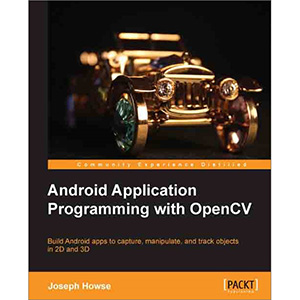
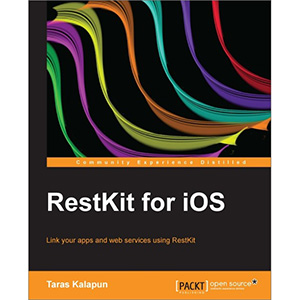
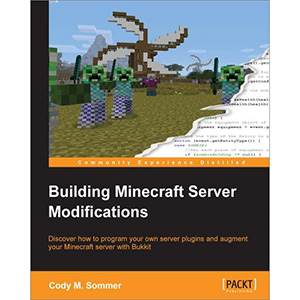
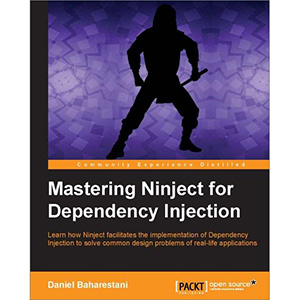
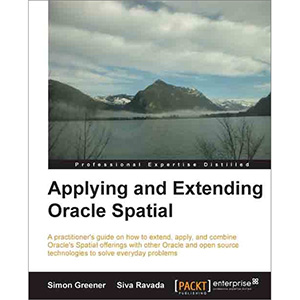

Tidak ada komentar:
Posting Komentar